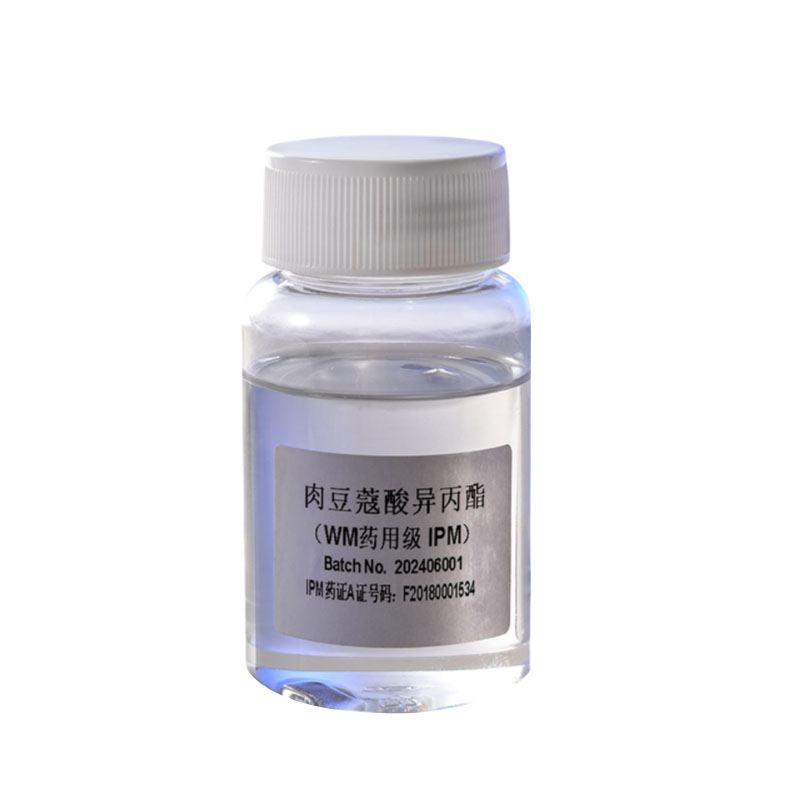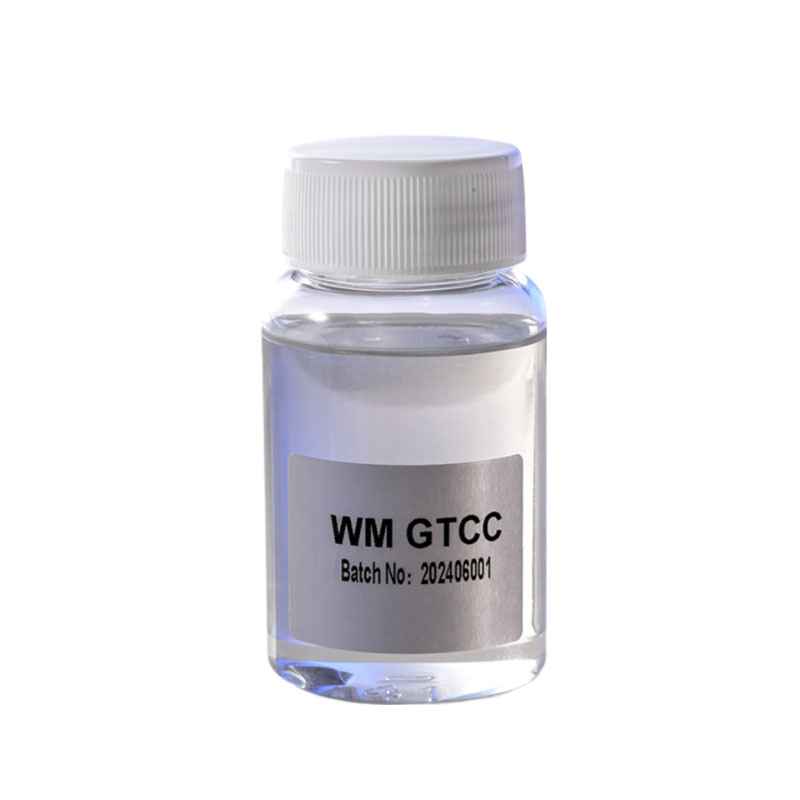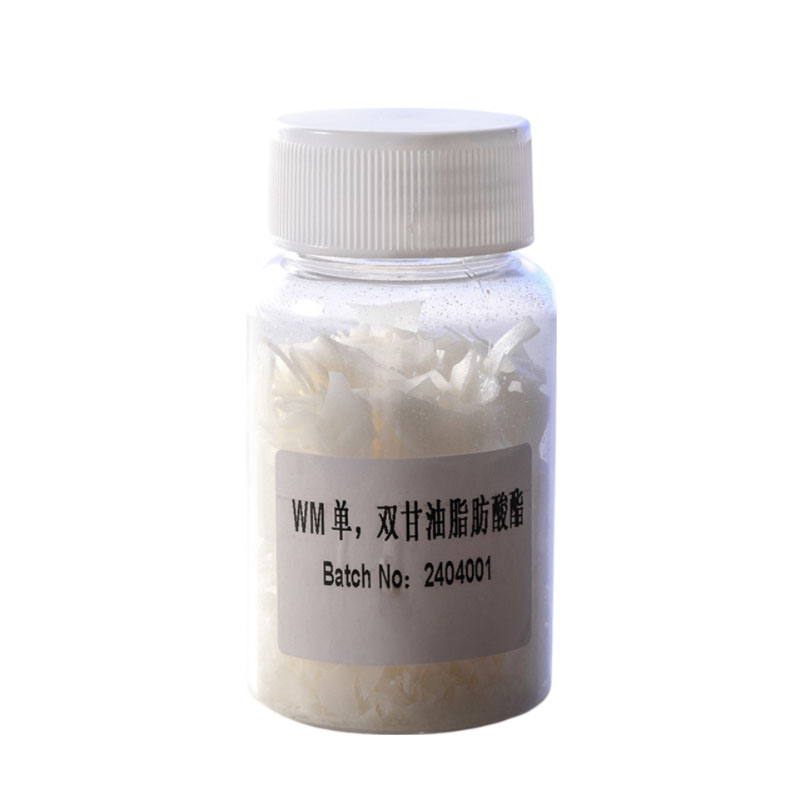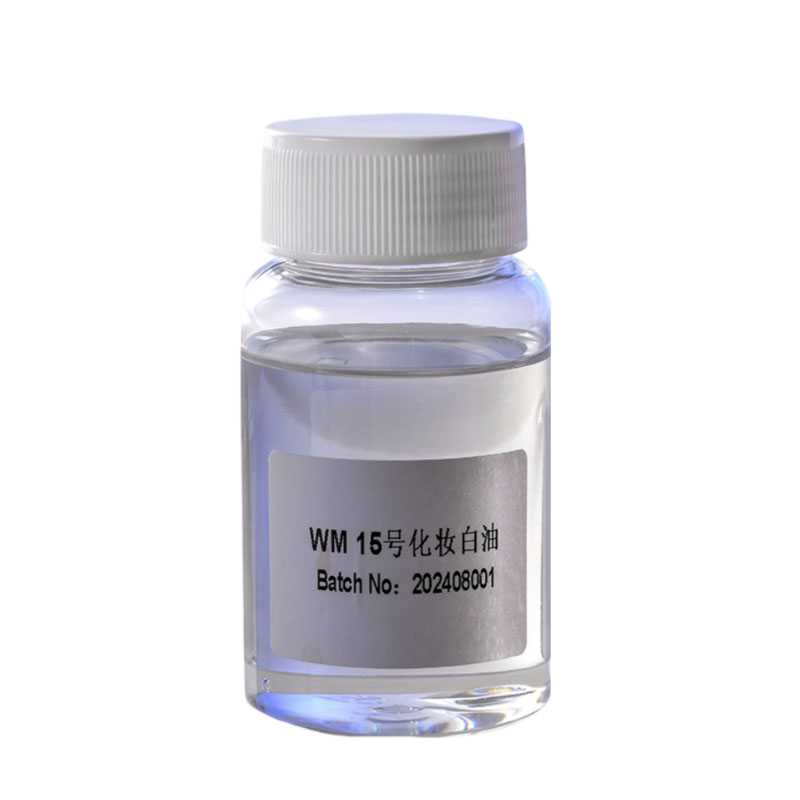How can the food-grade raw material monoglyceride simulate the mouthfeel of fat and improve texture in sugar-free/low-fat foods?
Release Time : 2025-10-08
With the growing popularity of healthy consumption concepts, sugar-free and low-fat foods have become a mainstream market trend. However, fat is not only a source of energy; it also plays a key role in providing lubricity, fullness, a soft texture, and flavor release. Significant reductions in fat content often lead to dryness, a heavy, powdery texture, a loose texture, or a bland mouthfeel, seriously impacting consumer acceptance. In this context, food-grade monoglyceride, a safe and effective multifunctional emulsifier, successfully mimics the sensory properties of fat in sugar-free/low-fat foods and significantly improves overall texture, making it an indispensable functional ingredient in the development of healthy foods.
1. Molecular structure imparts a "lipid-like" lubricity
Monoglyceride is formed by the esterification of one glycerol molecule with one fatty acid molecule. It possesses both hydrophilic hydroxyl groups and hydrophobic fatty chains, making it a nonionic surfactant. Its hydrophobic end binds to residual oils or hydrophobic regions of proteins in food, while its hydrophilic end interacts with water, forming a micron-thick lubricating film in the mouth. This film effectively reduces the friction between food and the oral mucosa, mimicking the smooth, rich mouthfeel of fat and significantly alleviating the "dry" or "gritty" texture often associated with low-fat products. In liquid or semi-solid products such as sugar-free yogurt, low-fat ice cream, and plant-based milks, monoglyceride can enhance the creaminess without increasing calories.
2. Stabilizes bubbles and emulsions, creating a fluffier texture
In low-fat baked goods, fat originally serves to encapsulate air and stabilize the batter structure. Removing fat can cause the batter to collapse, resulting in a denser texture. Monoglyceride reduces interfacial tension between the oil and water, promoting even dispersion of air and stabilizing it within the batter during mixing. Furthermore, it interacts with glutenin and starch in flour, strengthening the gluten network and delaying the collapse of air bubbles during baking. The resulting product is larger and more delicate, effectively compensating for the loss of fluffiness associated with fat reduction.
3. Regulating Starch Retrogradation and Extending Soft Shelf Life
Sugar-free/low-fat breads and pastries often experience accelerated starch retrogradation due to the lack of protective fat coating, resulting in a short period of hardening and crumbing. Monoglyceride forms a helical complex with amylose, hindering the rearrangement and crystallization of starch molecules, significantly slowing the retrogradation process. This anti-aging effect maintains the product's softness and elasticity throughout its shelf life, enhancing the eating experience and reducing waste caused by texture degradation.
4. Improving the compatibility of plant-based and sugar substitute systems
Common sugar substitutes or plant proteins in plant-based meat products or sugar-free chocolate can often result in a grainy or cold feel. Monoglyceride improves dispersion uniformity and interfacial integration, allowing the sugar substitute to dissolve more smoothly and the plant protein to be more finely distributed, thereby mitigating unpleasant tastes and enhancing overall harmony. For example, adding an appropriate amount of monoglyceride to sugar-free chocolate can improve the fluidity of the cocoa butter substitute, making the mouthfeel closer to the smoothness of traditional chocolate.
By mimicking the lubricity of fat, stabilizing microstructure, and slowing texture degradation, food-grade monoglyceride cleverly achieves "more with less" in sugar-free/low-fat foods, satisfying health demands while preserving a delicious experience. It's more than just a technical solution; it's a crucial bridge connecting healthy and enjoyable eating, helping the food industry achieve both quality and innovation amidst the wave of sugar and fat reduction.
1. Molecular structure imparts a "lipid-like" lubricity
Monoglyceride is formed by the esterification of one glycerol molecule with one fatty acid molecule. It possesses both hydrophilic hydroxyl groups and hydrophobic fatty chains, making it a nonionic surfactant. Its hydrophobic end binds to residual oils or hydrophobic regions of proteins in food, while its hydrophilic end interacts with water, forming a micron-thick lubricating film in the mouth. This film effectively reduces the friction between food and the oral mucosa, mimicking the smooth, rich mouthfeel of fat and significantly alleviating the "dry" or "gritty" texture often associated with low-fat products. In liquid or semi-solid products such as sugar-free yogurt, low-fat ice cream, and plant-based milks, monoglyceride can enhance the creaminess without increasing calories.
2. Stabilizes bubbles and emulsions, creating a fluffier texture
In low-fat baked goods, fat originally serves to encapsulate air and stabilize the batter structure. Removing fat can cause the batter to collapse, resulting in a denser texture. Monoglyceride reduces interfacial tension between the oil and water, promoting even dispersion of air and stabilizing it within the batter during mixing. Furthermore, it interacts with glutenin and starch in flour, strengthening the gluten network and delaying the collapse of air bubbles during baking. The resulting product is larger and more delicate, effectively compensating for the loss of fluffiness associated with fat reduction.
3. Regulating Starch Retrogradation and Extending Soft Shelf Life
Sugar-free/low-fat breads and pastries often experience accelerated starch retrogradation due to the lack of protective fat coating, resulting in a short period of hardening and crumbing. Monoglyceride forms a helical complex with amylose, hindering the rearrangement and crystallization of starch molecules, significantly slowing the retrogradation process. This anti-aging effect maintains the product's softness and elasticity throughout its shelf life, enhancing the eating experience and reducing waste caused by texture degradation.
4. Improving the compatibility of plant-based and sugar substitute systems
Common sugar substitutes or plant proteins in plant-based meat products or sugar-free chocolate can often result in a grainy or cold feel. Monoglyceride improves dispersion uniformity and interfacial integration, allowing the sugar substitute to dissolve more smoothly and the plant protein to be more finely distributed, thereby mitigating unpleasant tastes and enhancing overall harmony. For example, adding an appropriate amount of monoglyceride to sugar-free chocolate can improve the fluidity of the cocoa butter substitute, making the mouthfeel closer to the smoothness of traditional chocolate.
By mimicking the lubricity of fat, stabilizing microstructure, and slowing texture degradation, food-grade monoglyceride cleverly achieves "more with less" in sugar-free/low-fat foods, satisfying health demands while preserving a delicious experience. It's more than just a technical solution; it's a crucial bridge connecting healthy and enjoyable eating, helping the food industry achieve both quality and innovation amidst the wave of sugar and fat reduction.









